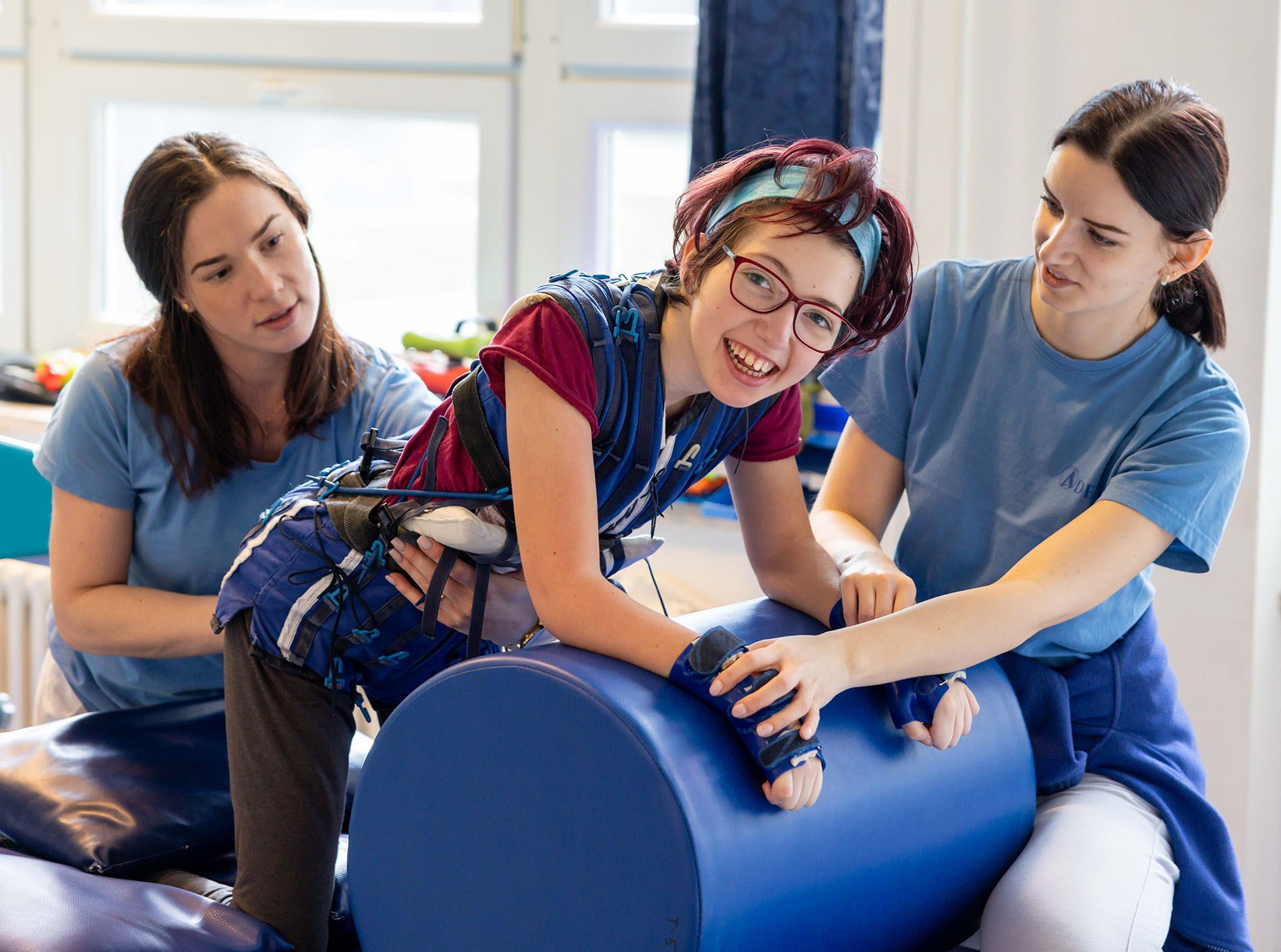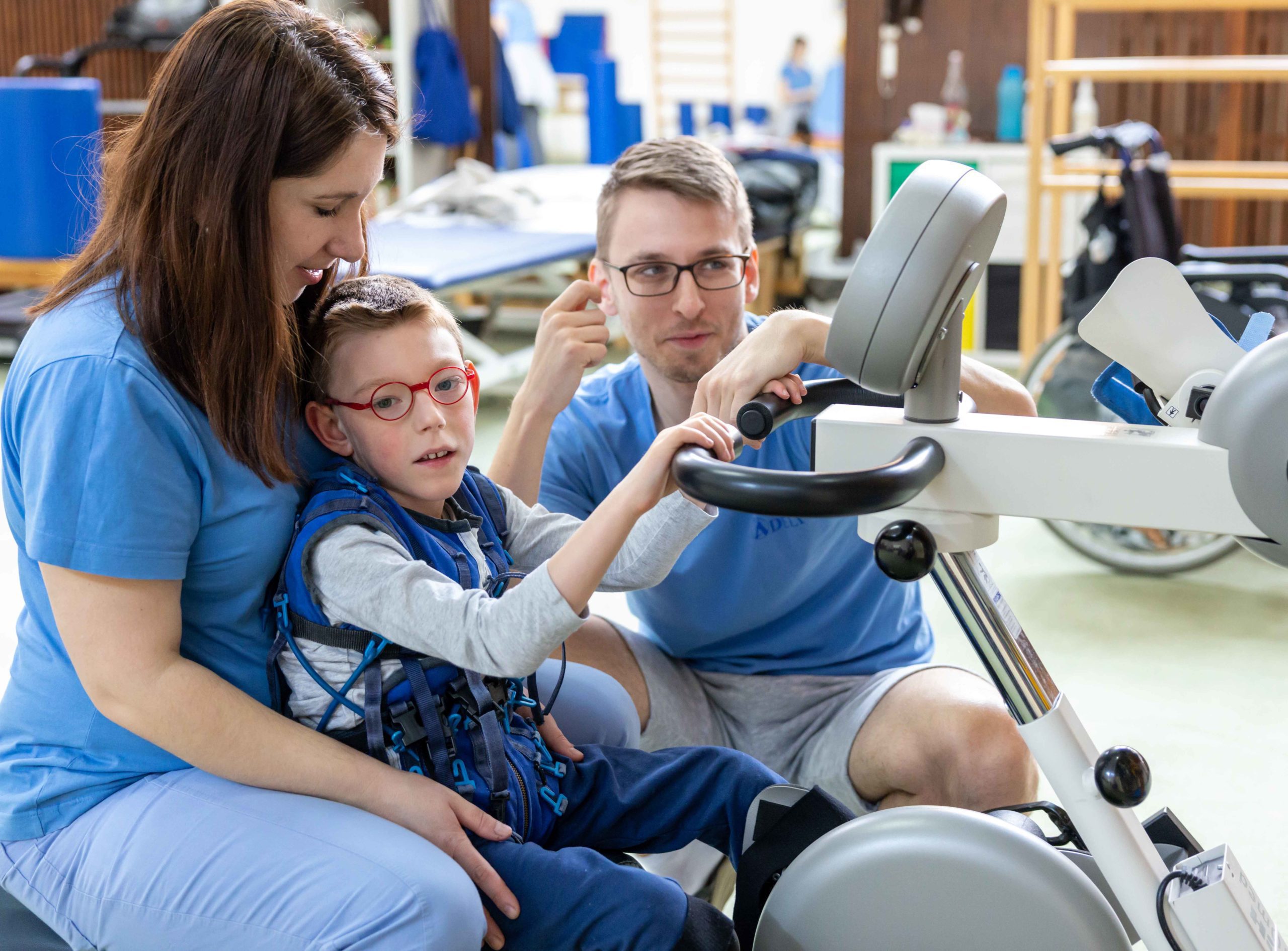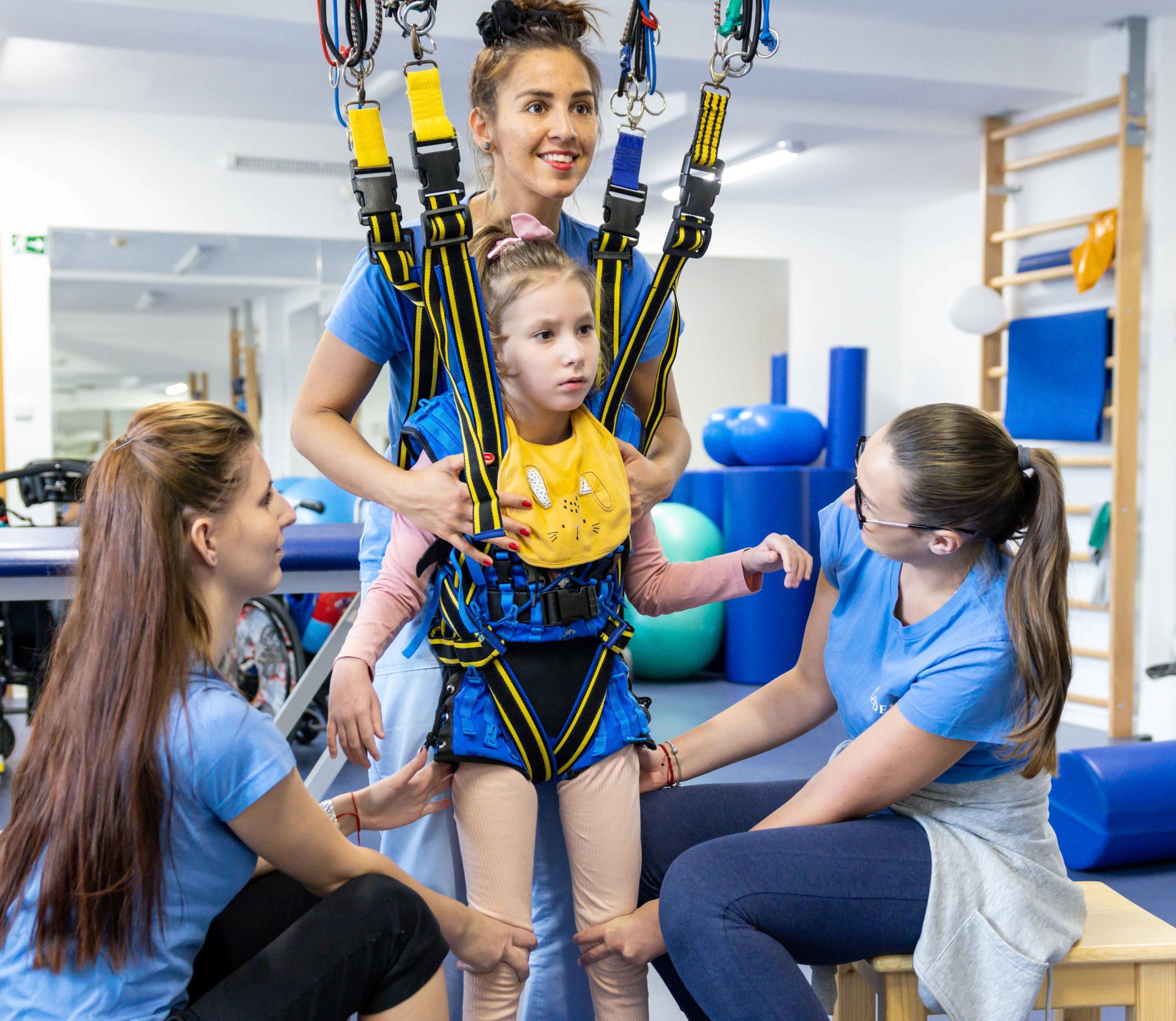


Als Eltern ist es Ihr größter Wunsch, dass ihr Kind selbstbestimmt und glücklich heranwächst. Das ADELI Medical Center steht Ihnen dabei zur Seite. Mit unserem speziell entwickelten Programm für „Kinder und Jugendliche“ unterstützen wir Sie und Ihre Familie im Alter von 2 bis 18 Jahren auf dem Weg zu einer erfolgreichen Rehabilitation bei neurologischen Erkrankungen.
Früherkennung spielt eine entscheidende Rolle bei der Behandlung von neurologischen Erkrankungen. Unser erfahrenes Team aus Neurologen, Therapeuten und Pflegekräften arbeitet engagiert daran, eine frühzeitige Diagnose zu stellen und individuelle Therapiepläne zu entwickeln. Wir möchten Ihnen und Ihren Kindern die Angst vor möglichen Diagnosen nehmen und zeigen, wie gezielte Therapieansätze die Lebensqualität und langfristige Entwicklung Ihrer Kinder verbessern können.
Unser Programm beinhaltet eine Vielzahl von Therapieansätzen, die auf die Bedürfnisse und Entwicklungsstufen der Kinder und Jugendlichen abgestimmt sind. Dazu zählen Physiotherapie, Ergotherapie, Logopädie, Hydrotherapie und viele weitere innovative Behandlungsmethoden. Wir arbeiten eng mit Ihnen als Eltern zusammen, um die bestmögliche Unterstützung für Ihre Kinder zu gewährleisten.
Das „Kinder- und Jugendprogramm“ richtet sich an Familien, die ihre Kinder in jeder Lebensphase bestmöglich unterstützen möchten. Bei uns erhalten Sie kompetente Beratung und umfassende Betreuung auf Ihrem Weg. Lassen Sie uns gemeinsam die Grundlagen für ein erfülltes und unbeschwertes Leben schaffen.
Vertrauen Sie auf die Expertise und Erfahrung des ADELI Medical Centers, um Ihren Kindern die bestmögliche Rehabilitation und Betreuung zu bieten. Wir sind Ihr Partner auf dem Weg zu einer erfolgreichen Behandlung und einer strahlenden Zukunft für Ihre Kinder und Jugendlichen.
Um ein individuelles Therapie-Programm aufzustellen müssen wir uns kennenlernen. Dazu bieten wir jedem unserer Patienten ein kostenloses Beratungsgespräch im ADELI Medical Center an.
Wir bieten Ihnen eine Vielzahl an Infomaterial und Neuigkeiten rund um das Thema neurologische und physiologische Rehabilitation an. Sollten Sie dennoch offene Fragen haben, finden Sie im Hilfebreich weitere Kontaktmöglichkeiten.
Im internen Bereich können Sie Beiträge, Therapien und weitere Informationen auf der Website für sich abspeichern. Wir erweitern unsere Platform stetig, somit werden Sie in Zukunft noch weitere nützliche Features erwarten.
Kontakt
Infomaterial
Anmeldung
Webentwicklung by Cloudcompany
ADELI Medical Center
Hlboká 45
92101 Piešťany
Slowakische Republik
Sie sind nicht angemeldet, hier klicken um sich anzumelden.
Ihre Formularabsendung wird lediglich zur internen Verwendung und Optimierung gespeichert. 2 Monate nach der Absendung wird dieses wieder gelöscht.